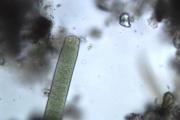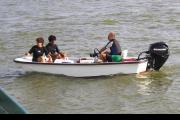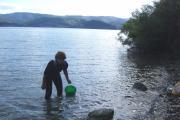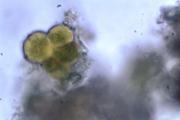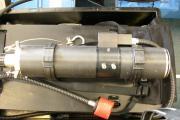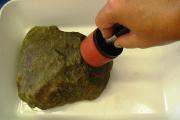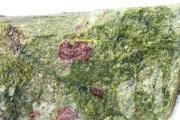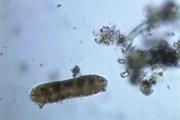
The EU Water Framework Directive (WFD) is giving such change a push, by requiring the good biological (ecological) status of rivers. And if biological testing was to become automated and in situ, that would make the work of biologists throughout Europe, and even across the globe, much easier. That is exactly what Slovakia's Jarmilla Makovinska, a JDS2 Core Team biologist, is trying out.
Her ‘benthofluor' is a unique piece of equipment devised to measure `phytobenthos´, or specifically Chlorophyll-A - microscopic plants that are one of the most important of the five biological parameters to be tested under the WFD. The device is the creation of a group of international partners including Professor Blahos Marsalek from the University of Brno in the Czech Republic, his PhD student Corinna de Hoogh, Netherlands water research institute KIWA and German commercial company 'bbe Moldaenke'.
The JDS2 is the first time that the benthofluor was ever used along certain Danube stretches. Seen in action, Makovinska takes a stone from the water and tests its surface with a probe connected to the device which sends out fluorescent light. The reflection returning to the device is then translated into an amount of biomass (i.e. amount of phytobenthos), as well as instant electronic information about the classes of phytobenthos living on the stone. Makovinska later compares the results from the device with data she gets through classical data gathering - in other words, do the classes identified by the benthofluor match those she observes through her microscope in the Argus lab?
"It's a very quick method that can be used to get immediate results at many points along the same stretch of river, without any lab analysis needed," says Makovinska. "In some places, I couldn't find the right stones. But in most, about 80 percent of the time, I did."
In today's world of biology, there are two camps - one believing that just about any kind of biological testing will be doable in situ, and the other more conservative group that believes the lab way is the only way.
"I am very satisfied so far," she says. "It may not be very precise, but at least for applied biology where it is necessary to compromise, it gives good information." She adds that there is also a current trend to use such devices at fixed automatic sampling stations that continuously monitor samples. "But this is still under development."











